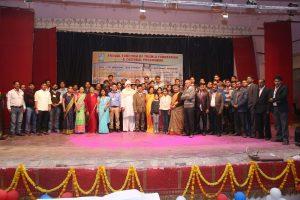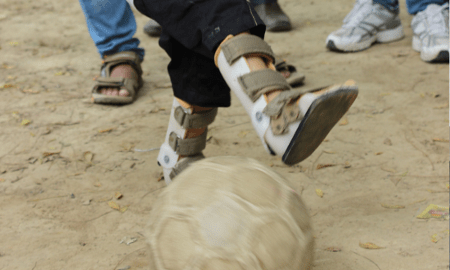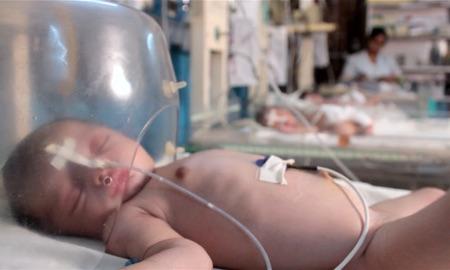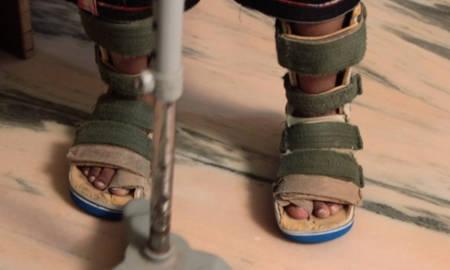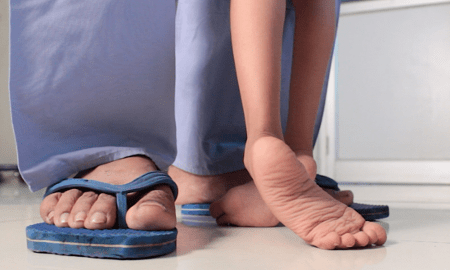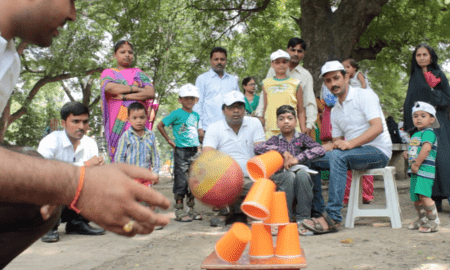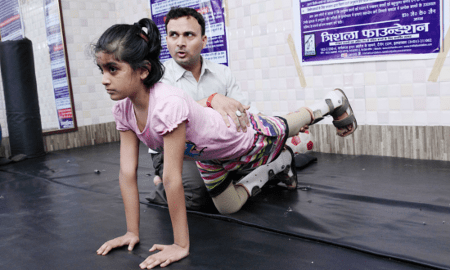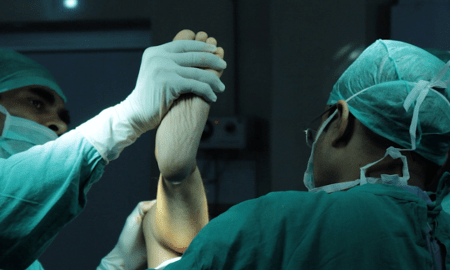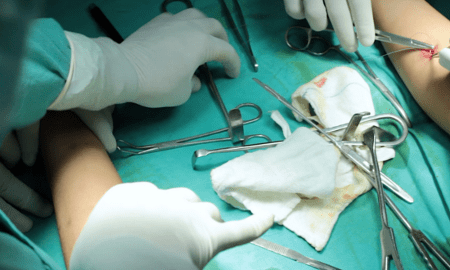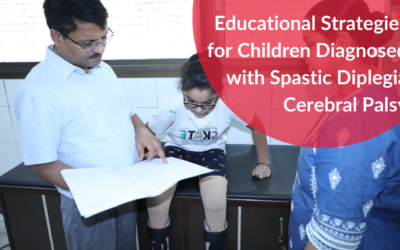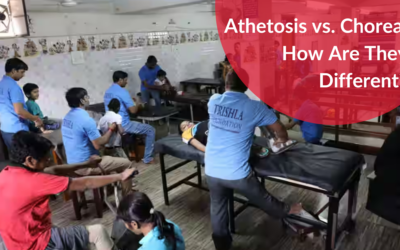Cerebral Palsy
Releted Posts
Cerebral Palsy
Cerebral Palsy Types
Cerebral Palsy Myths
Cerebral Palsy Surgery In India
Cerebral Palsy Children
Cerebral Palsy Defination
Cerebral Palsy Care Plan
Cerebral Palsy Prognosis
Cerebral Palsy Symptoms
Cerebral Palsy Treatment
Cerebral Palsy Therapy
Cerebral Palsy Organizations
Cerebral Palsy Living Style
Cerebral Palsy Birth Injury
Cerebral Palsy Associated Disorder
Cerebral Palsy Eating Feeding Tips
Cerebral Palsy Sleeping Disorder
Diplegia Spastic Cerebral Palsy
Spastic Cerebral Palsy
Yoga & Physiotherapy
Donate Now
Your one donation can give someone a new life
Cerebral Palsy
Definition– Cerebral palsy is described as a group of permanent disorders of the development of movement & posture causing activity limitation that is attributed to non-progressive insult to the developing brain of fatal or infant from prenatal period to 3 years after birth.
It is life-long motor dysfunction. The severity of Lesion may range from small defects to global affection of the brain. As a result, central control of muscle function is adversely affected to the whole of an individual’s life.
The brain injury is static; it is not progressive (that is, it does not change or get worse). However, the dysfunctions or disabilities associated with cerebral palsy can be static, progressive or regressive; that is, they can remain constant, increase or decrease. These changes are due to biological, environmental and therapeutic influences on body structure and function.
The motor disorders of cerebral palsy are often accompanied by disturbance of sensation like vision, speech or hearing problems, perception, cognition, communication, behaviour, epilepsy, recurrent infection and sometimes mental retardation.
Signs And Symptoms Of Cerebral Palsy:
When a child is not able to achieve developmental milestones in time he/she may have Cerebral Palsy. The other signs and cerebral palsy symptoms depend on the part of the brain affected. Their child may not be able to move, stand or sit but can also have associated problems like squint, vision, hearing, speech, epilepsy, behaviour problems.
Early signs of Cerebral Palsy include poor sucking, persistent abnormal reflexes, abnormal muscle tone, asymmetrical movement patterns, lack of social smile, epilepsy, recureent illness, delay in development milestone, lack of neck holding, poor balance & hand grip etc. Some time, these symptoms are very mild so missed very easily & diagnosis became delayed. So it is important to monitor development progress in the high risk new born with history of low birth weight and premature born infants. Late sign of cerebral palsy include delayed or inability to achieve development milestone like sitting, crawling, standing, walking, running, writing, drawing, difficulty in communication, speech, persistance of epilepsy etc. Brain insult in cerebral palsy is a static but their disability can decrease, increase or remain static depending upon treatment intervention, environment etc.
Different Types Of Cerebral Palsy:
Cerebral Palsy Types can be divided on the basis of clinical presentation and topography that is part of the limb affected.
Clinical Presentation:
Clinical classification: Clinical classification is based on the site of lesion in the brain. The pattern of involvement is
1) Spastic – commonest (70-80%): The muscles are stiff and initially there is difficulty in movement, with the passage of time they develop contracture and deformity.
2) Dyskinetic: The child may have some abnormal movement. This also can be of several types. The commonest are a) Athetosis- the child has bizarre & uncontrolled movement in the body. b) Chorea- fine rhythmic uncontrolled movement in upper limb c) Dystonia- the child is doing twisting and turning movement in limbs involuntarily which vanish when the child is asleep.
3) Ataxia: unable to have a sense of balance and depth perception
4) Mixed
Topographical Classification
Topographical classification is based upon extant of brain damage and involvement of limbs. The pattern of involvement is
1) Monoplegia: Involvement of only one limb
2) Hemiplegia: Involvement of one upper limb and one lower limb
3) Diplegia: Involvement of four limbs but lower limbs are involved more as compared to upper limbs
4) Triplegia: Involvement of three limbs, usually both lower limbs and one upper limb
5) Quadriparesis: involvement of all four limbs and also trunk involvement
Cerebral Palsy Diagnosis
The cerebral palsy diagnosis is clinical. It based on detail history & examination. Some tim,e we need MRI of the brain to see the exact pathology in brain, confirm the diagnosis. Genetic & metabolic investigation is required in suspected cases with genetic cause. Xray Hip joint is required to screen hip subluxation and dislocation.
When To Consult A Doctor
It is better to consult as early as possible. As soon as you know that something is not normal or milestones are delayed you must consult a doctor. Consultation with the paediatrician for making diagnosis, treatment of associated medical problem like epilepsy, infection, fever etc. Consultation with a neurologist is required when the child has epilepsy. Consultation with a physical & occupational therapist for a rehab program. An orthopaedic surgeon is required to make the diagnosis and see the musculoskeletal issues in a child.
Main Causes Of Cerebral Palsy:
Any insult to developing brain from the prenatal period to 2-3 years after birth can cause cerebral palsy.
1. Important Prenatal causes are intrauterine infections (especially TORCH infections) toxic drugs, multiple pregnancies, bleeding during pregnancy, placental insufficiency & genetic disturbance in the fetus.
2. Perinatal causes (during and just after delivery) are prematurity, low birth weight, neonatal hypoxia, severe jaundice, septicemia, respiratory distress syndrome, obstructed labor.
3. Postnatal causes (Afterbirth) – head injury, infection, convulsions, high fever. Despite best efforts sometimes exact cause of insult remains unknown. Now a day it is being considered that some genetic causes predispose infant brain for insult leading to the manifestation of cerebral palsy.
Mention cerebral palsy risk factors: low birth weight, premature delivery & perinatal asphyxia, hypothyroidism and genetic diseases are the risk factor for a child to develop cerebral palsy
Types Of Complications Which Occur During Cerebral Palsy:
Although brain damage is permanent and non-progressive the motor problems can worsen over time if left untreated. With an increase in weight and height deformity in a limb can worsen. Joints can dislocate. Bony torsion can develop. Most of the non-walker children are indoor most of the time so they develop osteomalacia, osteoporosis, etc and they are more prone to fracture. Also, the untreated children have poor immunity especially those who are not mobile. Therefore they frequently fall sick. These children are more prone to premature aging so they are more frequently developed cardiological problem & genitourinary issues.
Prevention Tips For Cerebral Palsy:
There is no absolute prevention of cerebral palsy as some genetic and unknown causes can’t be prevented, but with world-class advanced perinatal, mother and child care services we can reduce the occurrence to great extent.
Treatment Options For Cerebral Palsy:
Cerebral Palsy is not a disease it is a condition. As brain damage is permanent we cannot cure it but with give good and advance rehabilitation services we can make children self-dependent in all walks of life in 80% of cases. Physiotherapy & cerebral palsy occupational therapy is the mainstay of treatment in early age. However, some children who develop severe spasticity after the age of 2 years that interferes in cp child physiotherapy may need botulinum toxin injection. After age 7 years if a child develops muscle fix shortening, joint dislocation, bony deformity, then they may need surgery. In these children muscles are already weak so now day surgeries on muscle are not preferred but most of the time bony surgery is being performed. The child need thorough assessment including physical exam, gait analysis, per operative assessment for final surgical need. It needs highly specialized surgery. General orthopedic surgeries are either not useful or may harm the child. But despite of surgery and botulinum toxin, they need a good rehab program for long with strict guidance and follow-up.
Read More.........
Cerebral Palsy term used for group of symptom arise in children due to brain insult. Cerebral palsy is an umbrella term that refers to a group of neuro- motor disorders affecting a person since early childhood. It occure because of damage to the developing brain either during the pregnancy, during & after the birth of an infant upto 2.5 year of age. Severety & presentation is based of site and extent of insult in the brain. Most of the time sensory motor problem are associated with medical issues like problem in speech, deglutition, growth abnormality, epilepsy, lack of immunity etc. Motor problem occure because of abnormal muscle tone, posture, balance, selective motor controle and abnormal movement pattern.
Watch Our Success Stories
Cerebral palsy is a lifelong condition that affects individuals from infancy, presenting multiple challenges. As a parent & specialist, it's essential to have comprehensive information to navigate this journey.
Subscribe to our YouTube channel to access: Educational videos, Real-life case reports, Inspiring success stories
Stay informed, stay empowered!
Cerebral Palsy Associated Disorders
Cerebral palsy is not only about movement and motor problems. There are a lot of the other cerebral palsy complications associated with it. It includes pain, intellectual disability, speech and language disorders, epilepsy, seizures, visual impairment, bladder problems, sleep disorders, hearing impairment, hip displacement, and also a behavioral problem.
The management of cerebral palsy involves a multidisciplinary team .
Team For Cerebral Palsy Treatment
A proper team is required for cerebral palsy treatment which involves:
- Physiotherapist for physiotherapy to reduce impairment and optimize function.
- Occupational therapists for self-care skills and increase independence.
- Speech therapist for speech, language therapy and to improve deglutition.
- Pediatric Orthopedic Surgeon helps in making the diagnosis, evaluating the motor issues and planning for deformity correction.
- A Neurologist is required for treatment of epilepsy
- A Psychologist is required for mental health & behavioural problem.
- Pediatrician is required for managing general medical problem of child.
- Orthotic Technician help in measuring Braces.
- Social worker helps in coordinating all the activities.
Our team is always ready to help those children or person affected with cerebral palsy, limb deformity & physical disability .
Latest Concept In Management Of Cerebral Palsy Treatment
In our society there are lots of myths about cerebral palsy, like these cerebral palsy children can’t have a good quality of life, they will remain disabled for whole life and most of them are mentally retarded and can’t do much in their life and so on… But this is not the whole truth. It is proven a fact that with early intervention more than 80% children can be given fully acceptable life in society.
Prognosis
Quality of life & survival in Cerebral Palsy affected children with ambulatory capability with or without walking aid is roughly equal to normal population. More than 70% children with mild to moderate affection have nearly normal IQ. They can be active, productive members of their communities. They can have jobs, live independently, marry, have children & retire. They can even excel in the activity given to them. But this can happen only when every parent and other members of society know about different aspects of cerebral palsy and give them a chance of good quality of cerebral palsy treatment.
Etiology
Cerebral palsy is not a diseases but it is group of Neuro-motor disorder which occurs because of Non-progressive disturbances in the developing brain from fetus to 2.5 years of early life. This insult to brain occurs because of variety of reason start from in-utero to 2.5 year of age. Genetic & brain anomaly, intrauterine infection, post delivery birth-asphyxia, sever jaundice; encephalitis and birth trauma are common causes of brain insult that causes cerebral palsy. Low birth weight & premature babies are at highest risk for development of cerebral palsy.
Etiology
Cerebral palsy is not a diseases but it is group of Neuro-motor disorder which occurs because of Non-progressive disturbances in the developing brain from fetus to 2.5 years of early life. This insult to brain occurs because of variety of reason start from in-utero to 2.5 year of age. Genetic & brain anomaly, intrauterine infection, post delivery birth-asphyxia, sever jaundice; encephalitis and birth trauma are common causes of brain insult that causes cerebral palsy. Low birth weight & premature babies are at highest risk for development of cerebral palsy.
Disability
It is comprises of child physical disability in the form of sensory motor dysfunction along with problem in other function like problem in perception, cognition, communication, speech, hearing, vision, loss of immunity, epilepsy and lots more. It is a lifelong condition that affects individuals, their families and society. More than 50% patients can have one or more associated medical problems along with motor dysfunction. The brain injury is static; it is not progressive. However, the dysfunctions or disabilities associated with cerebral palsy can be static, progressive or regressive depending upon quality of cerebral palsy treatment and intervention. Cerebral palsy can present in variety of manner. Presentation is based on extent and site of lesion in brain.
Variety Of Cerebral Palsy
Spastic cerebral palsy is the commonest and most amenable to treatment. Second variety is Dyskinetic cerebral palsy in which child can be choreo-athetotic variety or dystonic one. In athetoid variety child cannot control movements of his body part and thus can have bizarre movement but in dystonic, they have abnormal posture with rigidity in extremity. Third variety is ataxic with unbalanced gait pattern and last one is mixed pattern in which there can be combination of spastic and Dyskinetic variety. Dyskinetic and ataxic variety usually affects whole body but spastic cerebral palsy can present in variety of manner depending upon extent of lesion in brain. This affection can be monoplegic affecting single extremity, one side of body in hemiplegic cerebral palsy, both lower limb in diplegic spastic cerebral palsy and two lower and one upper limb in triplegic and all four limbs can be affected in quadriplegic cerebral palsy. This classification is not sufficient to describe every problem in these Cerebral Palsy children since they can have lots of other motor problems like lack of postural control, problem in fine motor control and activity of daily living. Spectrum of the problem can range from clumsiness in gait to sever disability.
Variety Of Cerebral Palsy
Spastic cerebral palsy is the commonest and most amenable to treatment. Second variety is Dyskinetic in which child can be choreo-athetotic variety or dystonic one. In athetoid variety child cannot control movements of his body part and thus can have bizarre movement but in dystonic, they have abnormal posture with rigidity in extremity. Third variety is ataxic with unbalanced gait pattern and last one is mixed pattern in which there can be combination of spastic and Dyskinetic variety. Dyskinetic and ataxic variety usually affects whole body but spastic cerebral palsy can present in variety of manner depending upon extent of lesion in brain. This affection can be monoplegic affecting single extremity, one side of body in hemiplegic cerebral palsy, both lower limb in diplegic spastic cerebral palsy and two lower and one upper limb in triplegic and all four limbs can be affected in quadriplegic cerebral palsy. This classification is not sufficient to describe every problem in these Cerebral Palsy children since they can have lots of other motor problems like lack of postural control, problem in fine motor control and activity of daily living. Spectrum of the problem can range from clumsiness in gait to sever disability.
Incidence
An incidence of cerebral palsy is .6 to 4 per 1000 live birth and but high incidence (27 time more) in low birth weight (<1.5 kg) and pre term born babies (< 7 month of pregnancy). Worldwide about 15 million and in India about 3 million are affected with cerebral palsy. Now with the elimination of polio from many parts of world cerebral palsy has become the commonest cause of severe physical disability in childhood.
Management
Brain damage is not repairable so we can’t cure this problem but our goal is to allow these people live with least impact of disability. Our aim of management is to rehabilitate the children to their maximum ability & diminish their disability & impairment by all means so that they can be integrated to the main stream of society. Children affected with CP not only need treatment of physical disability but they also need treatment of every associated medical problem along with treatment of physical disability to give best outcome. Children with speech problem should be managed with speech therapy, problem with hearing deficit should be assessed for hearing aid, and epilepsy should be managed by anti epileptic management. All these children should be given early education and practice in hand writing so that they can be given admission in main stream school. Problem arises when child comes in very late stages with sever disability neglected for long duration and not able to perform any activity. In cerebral palsy children even small degrees of improvement makes a great difference. Getting a child to walk, be it in crutches, in braces or with a walker, is much better than having him in a wheelchair
Physiotherapy
Developmental Physiotherapy along with judicious use of light wt polypropylene brace & walking aid is the mainstay of treatment. In last few decades many therapeutic techniques have shown good out come in these children but use of single therapeutic technique are not so much helpful. Neuro Development Therapy, Sensory integration, CIMT, Strength training, Mirror therapy, FES, Hydrotherapy, Horse riding etc are few examples. These therapeutic techniques are used in different combinations based on specific requirement. Apart from these therapeutic technique our focus are toward training in activity of daily living along with activity oriented exercises. All these therapeutic modality should be supplemented with walking aid & light weight AFO made of polypropylene.
Read More.........
Parents should be trained in home based therapy program & activity of daily living so that they can give therapy to their child at home. These children should continue physical therapy for whole life and should be under direct follow-up of consulting physician & therapist till the maturity. All these therapeutic modality is not so much useful in Dyskinetic cerebral palsy and they need some relaxation exercise, pelvic balancing and correction of posture by tone reducing posture (TRP) & muscle relearning process (MRP). Yoga, meditation are great help to these children. Different posture of yoga are very helpful in cases with cerebral palsy specially dystonic & athetoid type. We have started using this different posture & yoga position for these problem and find excellent outcome in most of our children. But it require lots of training and gentleness in utilizing this yoga posture. Stretching exercise & joint mobilization are not helpful in this variety and even some time it harm to children. This is indicated in patient with associated spasticity, contracture but it should be managed with caution in these children and usually should be avoided and if really need then should be very gentle. Despite of all therapeutic modality, few of the children with spastic & mixed cerebral palsy do not show much progress due to persistence of sever spasticity. These children need some antispasic measure to control them. Few medicines like baclofen & other muscle relaxant are being prescribed for management of spasticity but not much helpful. Trihexiphenydil hydrochloride is being used in management of abnormal movement in athetoid & dystonic cerebral palsy. These medicines are very useful to control abnormal movement up-to some extent if it is used with good relaxing exercise technique.
Physiotherapy
Developmental Physiotherapy along with judicious use of light wt polypropylene brace & walking aid is the mainstay of treatment. In last few decades many therapeutic techniques have shown good out come in these children but use of single therapeutic technique are not so much helpful. Neuro Development Therapy, Sensory integration, CIMT, Strength training, Mirror therapy, FES, Hydrotherapy, Horse riding etc are few examples. These therapeutic techniques are used in different combinations based on specific requirement. Apart from these therapeutic technique our focus are toward training in activity of daily living along with activity oriented exercises. All these therapeutic modality should be supplemented with walking aid & light weight AFO made of polypropylene.
Read More.........
Parents should be trained in home based therapy program & activity of daily living so that they can give therapy to their child at home. These children should continue physical therapy for whole life and should be under direct follow-up of consulting physician & therapist till the maturity. All these therapeutic modality is not so much useful in Dyskinetic cerebral palsy and they need some relaxation exercise, pelvic balancing and correction of posture by tone reducing posture (TRP) & muscle relearning process (MRP). Yoga, meditation are great help to these children. Different posture of yoga are very helpful in cases with cerebral palsy specially dystonic & athetoid type. We have started using this different posture & yoga position for these problem and find excellent outcome in most of our children. But it require lots of training and gentleness in utilizing this yoga posture. Stretching exercise & joint mobilization are not helpful in this variety and even some time it harm to children. This is indicated in patient with associated spasticity, contracture but it should be managed with caution in these children and usually should be avoided and if really need then should be very gentle. Despite of all therapeutic modality, few of the children with spastic & mixed cerebral palsy do not show much progress due to persistence of sever spasticity. These children need some antispasic measure to control them. Few medicines like baclofen & other muscle relaxant are being prescribed for management of spasticity but not much helpful. Trihexiphenydil hydrochloride is being used in management of abnormal movement in athetoid & dystonic cerebral palsy. These medicines are very useful to control abnormal movement up-to some extent if it is used with good relaxing exercise technique.
Orthopedic Surgery
Orthopedic surgery is being used to correct fix contracture & bony mechanical mal-alignment. But most of the time traditional orthopedic surgery doesn’t help in these children, and there is high chance of recurrence & over-correction, development of reverse deformity and even some times child deteriorate and develop reverse deformity. Traditionally surgery was done in stages so children required repeated admission, usually advised at very late stage when child already develop some very sever fix deformity like bending of the knee, sever posture problem and very week muscle. Most of these deformities cannot be corrected at late age. Because of this fact orthopedic surgical intervention in cerebral palsy have given discredit.
Read More.........
There is no side effect in prescribed dose limit. Most of the children needs once rarely twice and very rare third time injection. Most of time in spastic cerebral palsy, child starts developing fix contracture, bony deformity after the age of 7 year and stop showing any further improvement even with continuation of therapy. Sometime this deterioration can also occur because of Vit D deficiency & rapid increase in height & weight. These children may deteriorate at very fast rate with in 1 year if proper intervention is not given in time. So at this age we need an intervention modality which should have quality of selective control of spasticity without any negative effect on already weakened muscle and bad posture, multilevel problem can be managed in single setting with short hospitalization and early start of rehabilitation. With that intervention future progression of disability can be prevented. With this aim we should think twice in selection of intervention procedure before embarking on final planning. Varieties of intervention modalities are available for these children but only few modalities fit in criteria of ideal intervention and few of them have been proven in literature worldwide. Selective dorsal rhizotomy, a kind of selective nurectomy at spinal card nerve root level. this surgical intervention is only useful in certain category of patient (pure spastic with good selective motor control in early age child ) and in the hand of few expert in this field. this may cause irreversible weakness in the extremity. orthopedic surgery with the latest concept is a proven modality of intervention for children with spastic & mixed cerebral palsy.
SEMLOS
In single event multilevel orthopedic surgery (SEMLOS), we try to correct every possible site contracture, deformity, bony torsion in single setting surgery. Earlier, we utilized the concept of OSSCS given by Dr Takshi Matsua in our surgical technique . This concept is based on spastic nature of long multi-articular muscle crossing more than 2 joint and antigravity posture balancing nature of short muscle crossing to single joint. So during surgery, we selectively lengthen all contracted & short long multi-articular muscles and spare all short mono-articular muscle. Currently with new update & intensive therapy program, we dont need much surgery on muscle.
Read More.........
It has been seen that muscle in CP child is weak and by lengthening we are weakning muscle further. Now, we are focusing on correction of lever arm problem by rotational, shortening & angular osteotomy of bone. By this concept, our muscle are not disturbed. Now days we need very infrequently lengthening of tendon and if need then we do myofascial aponeurotic release or tendon transfer. By this change in concept of surgery, very rarely we get muscle weakness. Because of this new update in surgical concept, whole body get good balance of muscle tone and with in short time child start showing good improvement. Sometimes we also do tendon transfer for augmenting weak muscle. Dose & site of surgical intervention are being decided on the basis of observational video analysis, detail neuro-muskuloskeletal examination and reevaluation of finding under anesthesia. Surgical intervention are being done in only selected patient, where we have achieved certain milestone and further improvement is not being possible because of mechanical misalignment. Every child requires different set of surgical intervention and we modify our surgical technique according to need of child. Ideal age for cerebral palsy surgery is 7-10 year, because walking skill gets mature at 6 to 7 year and we can assess in much better way but this technique can also be utilized in elder age group with good outcome. Surgical intervention is required only in selected patient with spastic & mixed cerebral palsy but not in other variety. We utilized mini incision / per cutaneous technique so that scar is very small & look aesthetic. Surgery is usually performed in regional anesthesia. Most of time child require only 3 day of hospital admission, plaster for 12 days and therapy starts within 2 weeks. All contracture, muscle imbalance & bony deformity are corrected in single setting anesthesia. There is no loss of antigravity activity. This surgical intervention improves the appearance, speed & efficiency of gait by simultaneous realignment of the lower limbs, patho-mechanics of the hip, knee and ankle in single stage. It decreases recurrence & subsequent surgery drastically. Decrease psychological trauma to parents & children. It enhances speedy recovery, easy therapy & better cooperation from child & parents. We have developed this comprehensive approach in last 12 years with regular update according to new researches & our experience. Our aim of orthopedic management is to make them ambulatory so that they can be prevented from negative consequences of not weight bearing like osteoporosis and others. We also emphasize that every children with nearly normal IQ get education in main stream school after getting sufficient training in preschool education. In last 10 years, we have managed more than 2500 children with good outcome. More than 600 children have undergone SEMLOS with excellent recovery. We take SEMLOS not as a surgical tool but as a part of total rehabilitation. It should not to be the last resort. Now it is possible to have Permanent correction of deformity, good balance of muscle tone with rare possibility of deformity recurrence. Successful rehab surgery gives all round acceleration of other function like learning, personality development, behavior along with motor function recovery. Now advance orthopedic surgical intervention is considered an important incidence in total management of patient with spastic cerebral palsy. We should not leave any stone unturned in the management of these children and adult. We should try our best possible efforts to give their maximum ability and give them a chance to intermingling with main stream of society.
SEMLOS
In single event multilevel orthopedic surgery (SEMLOS), we try to correct every possible site contracture, deformity, bony torsion in single setting surgery. Earlier, we utilized the concept of OSSCS given by Dr Takshi Matsua in our surgical technique . This concept is based on spastic nature of long multi-articular muscle crossing more than 2 joint and antigravity posture balancing nature of short muscle crossing to single joint. So during surgery, we selectively lengthen all contracted & short long multi-articular muscles and spare all short mono-articular muscle. Currently with new update & intensive therapy program, we dont need much surgery on muscle.
Read More.........
It has been seen that muscle in CP child is weak and by lengthening we are weakning muscle further. Now, we are focusing on correction of lever arm problem by rotational, shortening & angular osteotomy of bone. By this concept, our muscle are not disturbed. Now days we need very infrequently lengthening of tendon and if need then we do myofascial aponeurotic release or tendon transfer. By this change in concept of surgery, very rarely we get muscle weakness. Because of this new update in surgical concept, whole body get good balance of muscle tone and with in short time child start showing good improvement. Sometimes we also do tendon transfer for augmenting weak muscle. Dose & site of surgical intervention are being decided on the basis of observational video analysis, detail neuro-muskuloskeletal examination and reevaluation of finding under anesthesia. Surgical intervention are being done in only selected patient, where we have achieved certain milestone and further improvement is not being possible because of mechanical misalignment. Every child requires different set of surgical intervention and we modify our surgical technique according to need of child. Ideal age for cerebral palsy surgery is 7-10 year, because walking skill gets mature at 6 to 7 year and we can assess in much better way but this technique can also be utilized in elder age group with good outcome. Surgical intervention is required only in selected patient with spastic & mixed cerebral palsy but not in other variety. We utilized mini incision / per cutaneous technique so that scar is very small & look aesthetic. Surgery is usually performed in regional anesthesia. Most of time child require only 3 day of hospital admission, plaster for 12 days and therapy starts within 2 weeks. All contracture, muscle imbalance & bony deformity are corrected in single setting anesthesia. There is no loss of antigravity activity. This surgical intervention improves the appearance, speed & efficiency of gait by simultaneous realignment of the lower limbs, patho-mechanics of the hip, knee and ankle in single stage. It decreases recurrence & subsequent surgery drastically. Decrease psychological trauma to parents & children. It enhances speedy recovery, easy therapy & better cooperation from child & parents. We have developed this comprehensive approach in last 12 years with regular update according to new researches & our experience. Our aim of orthopedic management is to make them ambulatory so that they can be prevented from negative consequences of not weight bearing like osteoporosis and others. We also emphasize that every children with nearly normal IQ get education in main stream school after getting sufficient training in preschool education. In last 10 years, we have managed more than 2500 children with good outcome. More than 600 children have undergone SEMLOS with excellent recovery. We take SEMLOS not as a surgical tool but as a part of total rehabilitation. It should not to be the last resort. Now it is possible to have Permanent correction of deformity, good balance of muscle tone with rare possibility of deformity recurrence. Successful rehab surgery gives all round acceleration of other function like learning, personality development, behavior along with motor function recovery. Now advance orthopedic surgical intervention is considered an important incidence in total management of patient with spastic cerebral palsy. We should not leave any stone unturned in the management of these children and adult. We should try our best possible efforts to give their maximum ability and give them a chance to intermingling with main stream of society.
Page Medically Reviewed and Edited by
DR. Jitendra Kumar Jain
Dr. Jitendra Kumar Jain is a renowned name in the field of childhood physical disability & orthopedics problems in North India. He has been an MS Orthopedics, DNB Orthopedics, Pediatric orthopedic surgeon & cerebral palsy specialist for over 21 years.
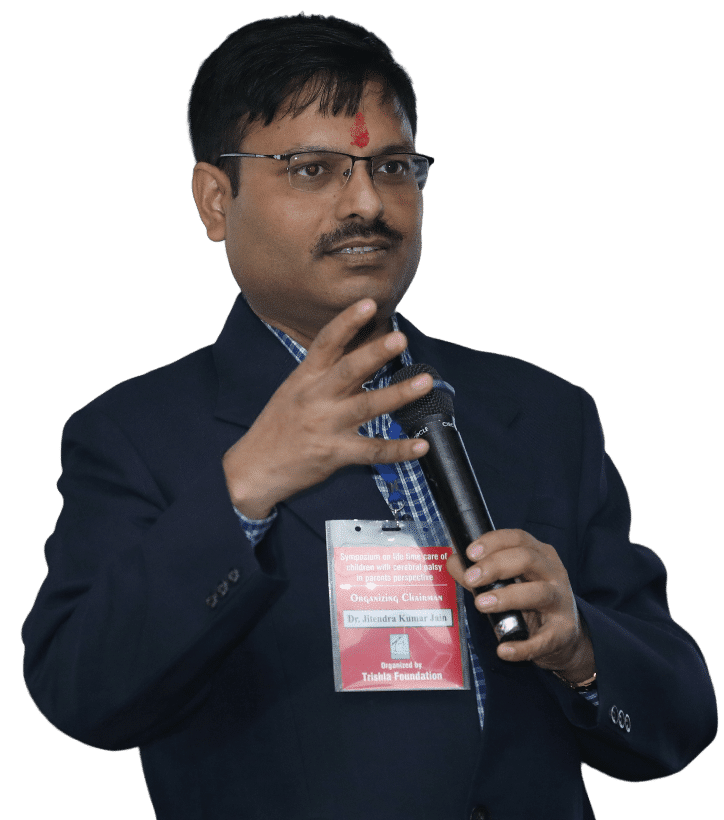

Page Medically Reviewed and Edited by DR. JITENDRA KUMAR JAIN
Dr. Jitendra Kumar Jain is a renowned name in the field of childhood physical disability & orthopedics problems in North India. He has been an MS Orthopedics, DNB Orthopedics, Pediatric orthopedic surgeon & cerebral palsy specialist for over 21 years.
Testimonials
Make a Difference
Support Trishla Foundation's Life-Changing Work for Children with Cerebral Palsy!
Together, we can break barriers and empower children with cerebral palsy. With your generous contribution, Trishla Foundation can continue its vital work in providing therapies, education, and support to these incredible children. Help us create a brighter future by donating today!

